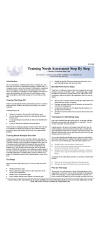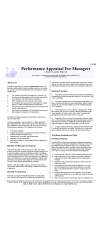Learn about sales funnels, churn, attrition and deceiving metrics.
Here’s the scenario. The social media platform you use indicates you have 25,000+ followers, or friends or people who should be reading and responding to your business related social messages. But wait. You almost never get responses from people even when you post about free offers. What gives?
Almost every business trying to use social media is or has experienced this, although very few stay around long enough to talk about it, or admit it. The result? Blunted hopes, wasted time, wasted money, because you will not reach the number of people you think you will. Period. That’s what we’ll cover in the rest of this article.
Effective “Reach” — The Funnel Illusion
All marketing, regardless of medium is based on eyeballs, and viewership. That is, at least two things have to happen for an ad or communication to have any effect whatsoever.
The message must be seen, or heard or otherwise come across the path of the people you want to reach. Makes sense because if there is no contact between your message and people, it’s like the tree in the forest. It may fall, but nobody knows about it.
Eyeballs is not enough though. For example, you may send me a spammy piece of self-promotional junk mail and it is auto routed to my email junk mail folder, and I’ll never actually read it. I will have “received it”, in the sense it got here, but it will do you know good, since I don’t read it.
So, we’re going to define a number of terms to help navigate the issue of reach in social media.
Total Reach and Total Potential Reach
Total reach refers to the number of people who come in contact with your message, whether it be a tweet, a status update, a blog post, or a video on YouTube. In effect this is a theoretical number because we can never know the upper limit for “eyeballs” for any particular message you send.
Here is a rough formula to help you understand the idea for Twitter.
Total Potential Reach = Number of Followers + People Who See Your Message via a Retweet + People who Find Your Tweet Via Searches + People who Find Your Tweet via print media, being quoted, etc.
If you look at this things start to look pretty exciting, because your Total Potential Reach is NOT limited to the number of followers you have, at least in theory. All you need to do is have enough followers and get them to repeat and retweet your tweets and you go “viral”.
Sadly, this doesn’t work well enough to rely on for business purposes. In fact, as you will see your Total Potential Reach is almost irrelevant. Even if you could know the number, it will help create what we call the “Funnel Illusion”.
Readership/Viewership
Total Potential Reach does not tell us how many people actually read a tweet, or view a video, or listen to a podcast through and through. For a message to be effective it must be processed by the potential customers (read, viewed, touched, examined).
So, we need to consider Viewership. When you send a status update or write a post on a blog, or comment on a blog, how many people actually read/view it with sufficient attention to attach to your message some value for you as a business?
In the general sense, we simply do not know how many people will read any one particular message we send out via social media. We can never have a figure that would be useful. We can’t say that on average ten percent of followers will read the average tweet. Even if we could say that the variation, message by message, is going to be huge.
Some messages you send might be read a lot, while others not, depending on a host of factors. Your messages may be read not very much at all, but MY messages may be more effective.
We can say that in almost all cases the number of people who read your messages on most social media will be much lower than the number of people who follow, friend, like, or subscribe to your messages.
Interestingly enough, this number — the percent of followers who actually read/view your message has different relevance for different social media. For example, on YouTube, which relies on long term content, the number of people who subscribe to your content is not very important. On Twitter, Facebook and Linked status updates, the number is much more important (see next section on “the stream”.
Action Reach
The total number of people who will read any single message you send will be less than the total of people who follow or friend you. While some argue that your “readership” is important in building your brand, the real payoff is getting people to take a desired action that will, either in the short term, or longer term, put money in your pocket. In other words, you need readers to “take action” and the more direct the path taken to purchase your service or product, the better. We refer to this as action reach.
The ultimate action you want is a purchase. There are however, intermediate actions readers can take that might pay off in the future, such as reading your article or product promotional material, or visiting and bookmarking your site. In effect there’s a mini-funnel for actions, with the widest point at the top indicating the number of people who will see your content of Twitter, or Facebook, and click the link to go to the next “step”.
The narrowest point in the funnel represents people who make an actual purchase from you (or otherwise do what you want them to do that provides you with your business benefit).
Summarizing the Funnel Illusion
By this point you should realize where this is going. The Funnel Illusion misleads us because all we can see easily is the number of followers, friends, or people who have put us on a list of people they might read. That doesn’t mean they will read everything you post. In fact, unless they are family and friends, they will NOT read everything you send, at least in most cases.
The numbers we can SEE — our followers, friends do not tell us our effective reach. In fact the number of people who read any given message will be only a fraction of the total number of people who follow us, and the number of people who will click on a link in our message is a fraction of the total number of people who read the message, and then, the number of people who will take an action beneficial to our business (i.e. A sale) is a fraction…. You get it.
Can we quantify what happens at each step of the funnel? Probably not at this point, but perhaps it doesn’t matter. The general concept is simple.
You need a lot of people signing up to see your messages in order to have a positive business impact, and total number of followers you have is deceptive
Unfortunately, there’s more to understand
More Factors That Narrow The Action End of the Funnel
We haven’t talked about the factors that can reduce the number of people who will take action that provides you with a business benefit, but for the sake of completeness, it’s probably a good idea to look at some examples:
- Interested in your product or service but cannot access it due to geographic location (i.e. she is located on another city or continent, cost of shipping too high)
- Interested in your product or service but just doing background research (according to research this is fairly common).
- Interested in product/service but your price/selection doesn’t fit for them
- Other seemingly random variables — doesn’t like the look of the landing page, you don’t take payment method they use, your site is inaccessible at the moment, etc.
- Likes what you offer but can’t get approval to purchase if it’s a business (or spousal agreement if it’s not).
You can probably come up with other reasons why people will not buy from you even though they’ve traveled down most of the funnel. If you are sharp, you’ll also realize that the same thing happens in retail outlets, or in any other business. There will always be tire kickers, browsers and people out for free entertainment by looking at what you have to offer. Your hope, of course, is that some of these will eventually come back when they are ready.
The reasons these “funnel restrictors” are included here is to counteract the “hype and hope” blasted at you by social media marketers and proponents who rarely talk about any negatives about entering the social media “marketplace”.
Social Media Churn and Tribute To The Dead
In early 2010, RJMetrics released some interesting numbers about Twitter. Its findings were that 80% of Twitter accounts had been abandoned, but left on the system. A previous study by Nielson suggested a lesser number — 60%. Things change fast in social media, so the difference could be accounted for real trends (more people opening accounts and leaving), or methodological reasons in how they gathered the data. What matters is this:
A whole lot of people you think are “there” aren’t there, and perhaps weren’t really there in the first place. So, if you have 1,000 followers on Twitter, the likelihood of 800 of them being “absent” is high.
The term to describe this getting on and getting off, is called churn. Clearly if 80% of those on your Twitter follower list are not there anymore, your reach is much smaller than you thought.
What about other platforms such as Facebook? For a variety of reasons, it’s harder for third party researchers to study user behavior at Facebook. Facebook itself says they have 400 million active users, with half of that group logging on each day. However, they don’t identify how they determined who was active or inactive, and we should be skeptical of numbers that cannot be documented by disinterested third parties. However, it may be that Facebook represents a platform with the least “churn” will Twitter may represent a platform with huge churn/turnover.
What are the implications of Churn?
There are actually two different scenarios you need to understand. First there’s the situation where someone creates an account on a social media platform, follows or friends others (like you), and then simply slinks off, bored, or otherwise disinclined to return. In effect these people are gone, but you don’t know they are gone. The Twitter numbers suggest as high as 80% may do this.
Then, there are people who join, and either delete their accounts, or have the accounts deleted by the platform owners. In this case, deleted accounts will NOT make it appear that you have more people interested in you and your business than actually exist, because, in effect, the accounts are gone.
In the first scenario, you believe you are reaching many more people than you actually reach.
Both scenarios share one other implication and that is that since there is at least some level of attrition, either visible or not, a business needs to be constantly acquiring new followers and friends, or risk the possibility that the information it sends is actually seen by nobody (or near to it). The implication here, and one we’ll discuss further a bit later, is the invisible “cost of acquisition” of followers, friends and potential customers.
Understanding “The Stream”
Imagine sitting by a stream, watching the water go by. There’s some gorgeous flowers, and once in a while a squirrel or raccoon wanders by as you sit on the bank. I am upstream from you and make a little paper boat, and drop it in the water. There it goes. It floats on and on, and just as it gets close to you, one of those raccoons comes up to you. You turn your eyeballs to the animal, just as the boat goes by you.
You never saw it. You were kind of there. You could have seen it. But you didn’t.
Let’s say you knew I was sending the wee boat, and after a while you realize you didn’t see it. In a true stream, it’s gone. You might be able to run quickly and try to catch up to it, but it’s likely you won’t. It’s not all that important. You might be able to search for it, somehow, from an airplane or using a satellite system, but it’s an awfully small boat, and again, it’s not really that important.
That’s a stream. There’s an ever changing flow of “stuff” that goes by your stationary position, but if you don’t see it go by, it’s unlikely you will ever see it. You need to be watching and paying attention.
The flowing water is an imperfect analogy in some ways, and picky people could argue that if you miss a message (a tweet or status update) you can actually find it and read it), and as far as that goes, it is sometimes true. However, by and large, when we talk business use, we talk about people who don’t know you, have few if any emotional bonds with you, and really aren’t going to work hard to see if they missed anything.
Simply, for platforms that have “streams” — that includes status updates and tweets — if someone does not see your message when you send it, they likely will not ever see it. The more people a person follows or friends, and the more “stuff” that rides the stream, the less likely they will be to see or search for messages from you. They get lost in the general traffic of all the other paper boats going by.
Finally if you are wondering whether it’s possible to access an archive of items that went by in the stream, the answer is theoretically, yes. Practically speaking, for Twitter and Facebook, often the archives are not accessible, due to technical or unknown reasons.
Implications of “The Stream”
This really is fairly simple. Once again, when you send a message into the stream (status update, tweet), only a small (and unknown) number of people will see it. If you have `one thousand followers or friends, the number of people who will be in a position on the riverbank to read what you wrote is small. Unknown quantity but small, none the less.
This does not apply to platforms where the material you posted last year is as easy to find as something you posted yesterday. For example, YouTube is an example where the content you post is available easily. YouTube does not have a “stream”.
More On Marketing Via Twitter
Despite the possibility of exceptions to the rule, it’s very difficult to market on Twitter, or on any other social media platform that involves streaming. There is no way to “get around” the very nature of a streaming platform. It is what it is. However, you might find the following suggestions useful.
- Evaluate your Twitter marketing attempts by focusing on sales or leads, rather than your number of followers, retweets and responses. You can’t buy bread with followers.
- Be alert to the amount of time you have to spend “working” Twitter. It’s easy to get caught up spending much more time than is justified by the return on investment. Consider logging the time spent to track it.
- Consider using Twitter as a channel to provide customer support and general brand visibility rather than marketing to make sales. People expect you to be there, so….you’d better be there.
- Use hashtags that are likely used by others to search based on subject content. For example, in my Twitter posts from an account addressing performance management, I use the tag #perfmgt. Don’t rely on your self invented tags but use those that are common on the platform. (Hint: Do a search on “hashtags popular” (no quotes) to find sources that will help you find popular tags.
- Tweet good content, and not just sales pitches. use Twitter to establish a positive brand image, and to remain in the minds of visitors, rather than trying to force a sale from your tweets. Establish your brand, and sales will come.






